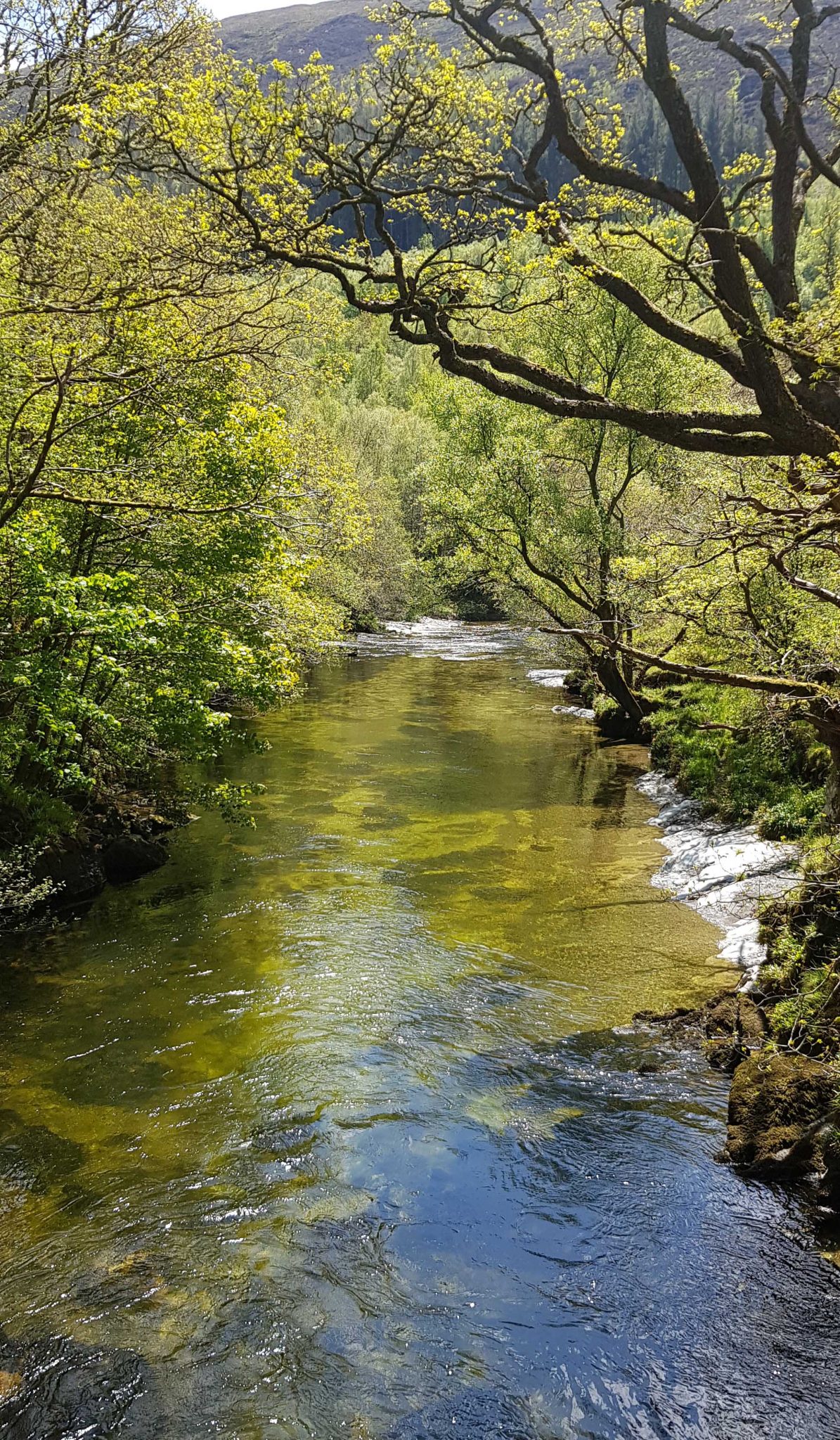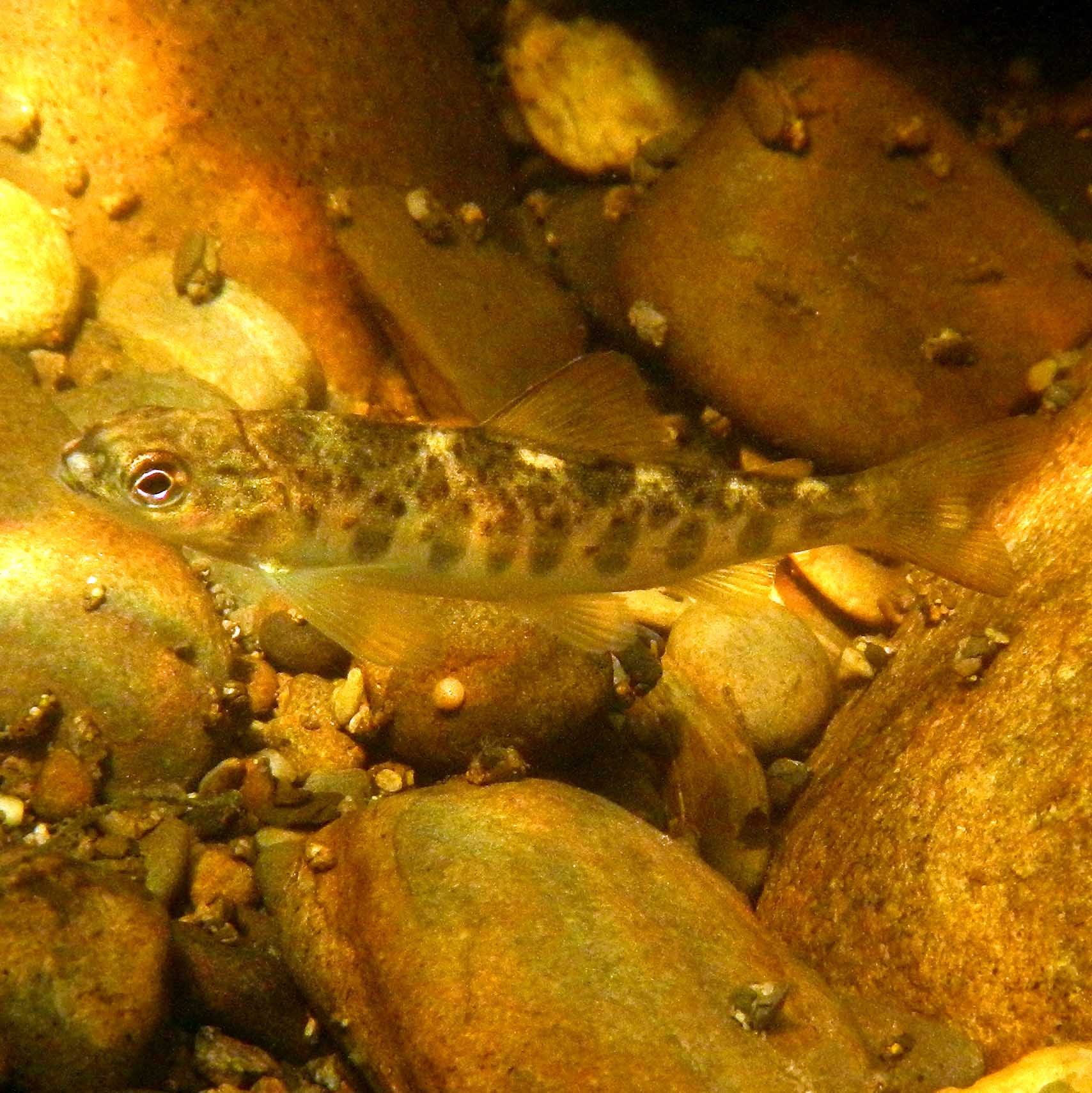The right tree in the right place to benefit rivers and the environment is neither a radical nor original concept, yet it is an approach that is yet to be fully embraced.
Dense plantations of non-native conifers often have negative impacts on river water quality, including increased levels of acidity, pesticides and sediment. They can also exacerbate extreme flows (through forest drains and clear-felled areas) and can cause problems for fish migration in headwater streams when culverts are installed for forestry tracks.
Clear-felled areas of commercial forestry can lead to faster run-off, increasing flood risk further downstream and, in winter, threatening salmon and trout redds in the streams immediately below. This run-off often brings with it surges in acidity which can also damage fish eggs and kill off invertebrates.
The optimum water temperature range for Atlantic salmon is between 6 and 20°C. Shade from trees can reduce temperatures in small rivers on average by 2″“4°C (compared to unshaded streams) and in some instances, shaded streams can be over 6°C cooler on hot days.
Friday 14th April, 2023
Reversing the alarming decline of Wales’s salmon and sea trout (sewin) populations will require new and radical approaches to how we manage rivers.
Sea survival rates of Atlantic salmon have plummeted by around 70% since the middle part of the last century. Nowadays, less than 5% of adults return to our rivers to spawn after spending one to three years at sea. This means that if these iconic fish species are to survive, Welsh rivers need to be in a good enough state to protect returning adult fish and enable as many juveniles to be produced as possible. For various reasons, this is not currently the case.
However, there are also measures that could be taken that are not particularly original or radical. One of these is to plant more trees. Providing the right species is planted in the right place, trees can have multiple benefits for rivers and streams and not just for fish species. This is by no means a new concept, yet it is one that has been surprisingly slow to be embraced.
Up to now, biodiversity, water quality and aquatic ecology have not held much sway in forestry policy decision-making when compared to commercial considerations and carbon targets
It has also been known for some time that the wrong type of tree in the wrong location will have the opposite effect. For many years, tree planting policy in Wales seems to have been dominated by commercial considerations (just under £37M income to Natural Resources Wales from timber last year) and a narrow focus on carbon targets. Sadly, it appears biodiversity, water quality and aquatic ecology have not held as much sway in decision-making. As a result, fast-growing, non-native conifers have largely been the tree of choice. However, dense plantations of sitka spruce often have negative impacts on river water quality (increased acidity, pesticides and sediment, for example), exacerbate extreme flows (through forest drains and clear-felled areas). They can also cause problems for fish migration in headwater streams when culverts are installed for forestry tracks.
And the fish species that mostly inhabit forested areas in Wales? Salmon and trout.
Coniferous forestry accounts for around 4.5% of land use in Wales, 60% of which is Natural Resources Wales-managed. Welsh Government have committed to 43,000 hectares of new woodland being planted by 2030 and a total of 180,000 hectares by 2050 (which would triple the current area). It is not clear how much of this will be coniferous but if these sorts of targets are to be attained alongside healthy populations of salmon and trout, here’s what we recommend needs to happen, starting with the very next forestry plan:
- Welsh Government needs to consider biodiversity, fish populations, Water Framework Directive targets, drought, floods and the wider environment as much as it does financial and carbon targets when it comes to forestry policy.
- The cumulative negative effects of non-native conifer planting have to be considered in the forestry planning process (avoiding the same mistake that were made with poultry).
- All forestry plans should have independent Environmental Impact Assessments (EIAs). Currently, Natural Resources Wales decide whether these are necessary for both their own and private forestry operations. From April 2002 to December 2022, of the 362 applications for afforestation in Wales, only 16 required the completion of EIA before permissions were granted (Source: NRW Environmental Impact Assessments webpage). Data was not provided on the split of these between deciduous and coniferous woodlands.
- Conifer planting should not take place within failing SAC river catchments. This includes important spawning areas upstream of the SAC boundaries.
- A higher proportion of native tree species should be planted. All conifer plantations must include a buffer strip of native deciduous trees on every river in Wales (whether SAC-designated or not).
- Natural Resources Wales’s advice that “”¦.no new planting on soils with peat exceeding 50cm depth or on sites that would compromise the hydrology of adjacent bog habitats” should be adhered to.
- Self-seeded conifers outside plantations should be removed.
- No acid sensitive catchment in Wales should be planted with coniferous trees.
- Absolute clarity and transparency on the true economic and environmental benefits of commercial forestry, especially when it comes to national targets in carbon offsetting.
NRW’s records indicate that of the 362 applications for forestry in Wales between April and December 2022, the regulator deemed only 16 as requiring Environmental Impact Assessments.
The recent report published by Natural Resources Wales about salmon and sea trout points to climate change (both in-river and marine) as an important factor in the species’ decline. Salmonids need cold, clean river water for both successful spawning and juvenile survival with the optimum temperature range for salmon being between 6 and 20°C (for trout it is slightly higher).
The report points to the extremely warm, wet winter of 2016 as a possible reason for the widespread failure in salmon spawning (trout were affected too but not as severely) across Wales. Extremely hot summers and drought are also dangerous ““ water temperatures over 23°C will cause thermal stress to salmon and there have been reports of salmon mortalities on rivers such as the Wye during the past two summers.
According to the MetOffice, UK weather projections show an increased chance of warmer, wetter winters and hotter, drier summers along with an increase in the frequency and intensity of extremes. In other words, salmon and sea trout populations that are already under stress will face even less-friendly conditions unless every effort is made to protect them.
Done in the right way, there are considerable opportunities for forestry not only to help our beleaguered salmon and sewin but also to help Wales achieve its targets for biodiversity, water quality and carbon sequestration
Keeping water temperatures cool in the headwaters is therefore paramount and it has been known for some time that deciduous tree cover along banks is an effective way of doing this. According to the Joint Nature Conservation Committee, “shade from trees can reduce temperatures in small rivers on average by 2″“4°C (compared to unshaded streams)”¦.” In some instances, shaded streams can be over 6°C cooler on hot days.
However, this cooling effect does not necessarily apply to conifer plantations. In fact, they can have the opposite effect of significantly increasing the temperature at ground level and therefore of rivers.
Appropriate planting of trees can also reduce rapid run-off during our increasingly wet winters. Not only does this help reduce flood risk for humans further downstream, it also reduces the likelihood of damage to sensitive salmon and trout redds from high flows. Clear-felled areas of forestry, on the other hand, have the opposite effect.
If done in the right way, there are considerable opportunities for forestry not only to help our beleaguered salmon and sewin but also to help achieve targets for biodiversity, water quality and carbon sequestration. Changing policy away from non-native conifers could also mean soil health improving, flood risk reduced and some protection for rivers against worst impacts of drought.
Our forestry policies need an urgent re-think. There is nothing original or radical about the concept of the right tree in the right place, yet in Wales we still appear reluctant to embrace it fully as policy.
We would like to thank West Wales Rivers Trust and The Fishmongers’ Company for their support in this article.
More Information:
Natural Resources Wales Report ““ “The identification and characterisation of small salmon populations to support their conservation and management.“ Published March 2023.
“Research reveals trees help protect river habitats.” Cardiff University, October 2015
“Catastrophic effect of warming temperatures on river life in Wales.” WalesOnline, October 2022
“Beyond cool: adapting upland streams for climate change using riparian woodlands.” Stephen M. Thomas, Siân W. Griffiths, Steve J. Ormerod, September 2015
“Progress in adapting to climate change 2023 Report to Parliament” Climate Change Committee March 2023
“Keeping Rivers Cool.” JNCC .




